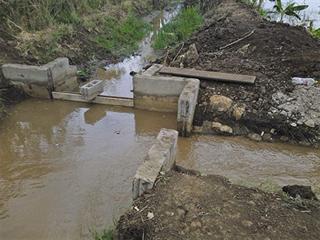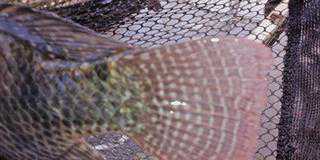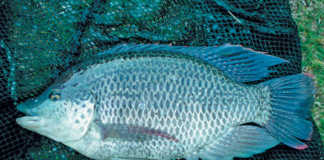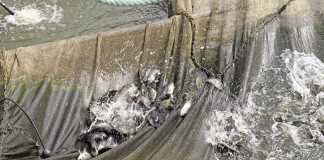
In my previous article, I pointed out that as long as we don’t treat them as ‘holes in the ground’, ponds are suitable for rearing large quantities of fish where water and land are not a problem. Many of South Africa’s great irrigation dams have significant potential for aquaculture. Conservation is all about the sustainable – and multiple – use of natural resources, yet the historical resistance of the Department of Water Affairs to any co-use of state dams with aquaculture has severely limited aquaculture development.
Fish ponds constructed downstream of large impoundments make sense. The water is then used twice, with very little ‘consumption’ by the aquaculture project before becoming available for irrigation. The only difference in the water quality from aquaculture dams is the possibility of slight enrichment with nitrates.
And as these natural fertilisers will enhance crop growth, and reduce the need for chemical fertilisers, you have to ask what the problem is. Could it be that officials in government departments are simply ignorant of the benefits of aquaculture? Or are they perhaps suspicious of other water-users, and unwilling to collaborate with them?
Whatever the case, this neglect is a great pity. It has helped to ensure that South Africa remains a poor performer in a growing international industry, whereas a little lateral thinking and vision could go a long way.
Farm dams
In the private sector, farm dams also have substantial aquaculture potential, but not as primary producers of fish products – only as reservoirs of water. The stocking of farm dams with fish does little more than enhance what are often little more than wild fisheries with low production potential.
Read: Aquaculture products – let the buyer beware
The element of control is largely absent: these dams can rarely be drained, predators are abundant and the presence and reproduction of wild fish species mitigate against any sort of controlled husbandry of the target fish species. It is a much better idea for water from farm dams to be fed to specially-built ponds enriched with animal manure to promote the
growth of feed organisms such as zooplankton and phytoplankton.
(It is these, not the manure, that feed the fish.) Production of up to 5t/ha can be achieved in warmer areas without supplemental feeding, and twice this with artificial feed added on a regular basis. The ponds need to be completely drainable, with proper inflow and drainage controls such as sluices and monks. A typical pond area is 0,25ha to 0,5ha, and depth is shallow (less than 1,5m) to assist with warming.
Harvesting
The fertilised greenish water offers the fingerlings a degree of protection against avian predation. Single sex stocking ensures that uncontrolled reproduction does not lead to a harvest of predominantly under-sized fish. Harvesting can be done selectively, using nets to remove the largest fish first, followed by draining the pond for a 100% harvest, prior to re-stocking with fingerlings.
Nicholas James is an ichthyologist and hatchery owner.













